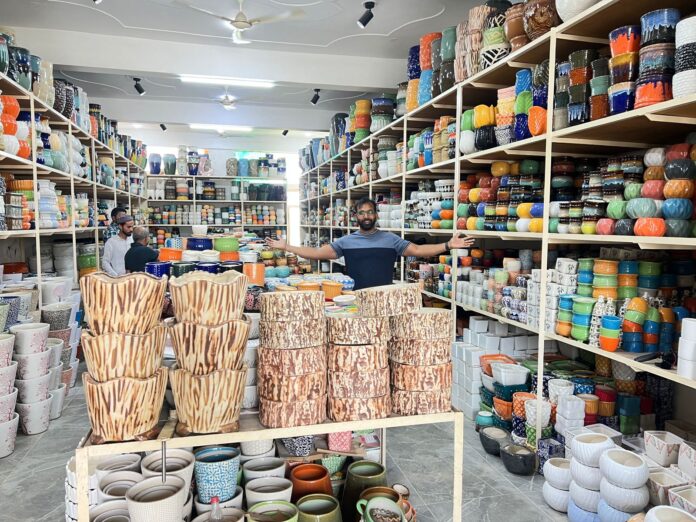Khurja, a small town in the Bulandshahr district of Uttar Pradesh, India, is renowned for its rich tradition of pottery and ceramic craftsmanship. With a history dating back to the 14th century, Khurja pottery has evolved into an art form that combines traditional techniques with modern designs. This article explores the beauty and significance of Khurja ceramic pots and the thriving pottery industry in the region.
- The Origins of Khurja Pottery:
- Khurja’s pottery tradition dates back to the reign of Firoz Shah Tughlaq, a medieval ruler.
- The craft flourished under the patronage of Mughal emperors, further refining the techniques and designs.
- Khurja pottery gained recognition for its high-quality craftsmanship and exquisite decorative motifs.
- Traditional Techniques:
- Hand-molding: Skilled artisans shape the pots by hand using a combination of wheel-throwing and hand-building techniques.
- Clay preparation: The pottery clay is sourced locally and undergoes a meticulous process of cleaning, soaking, and kneading.
- Glazing and firing: Pots are coated with a special glaze made from natural minerals before being fired in traditional kilns.
- Unique Features of Khurja Ceramic Pots:
- Vibrant colors: Khurja pottery is known for its bright and lively color palette, often featuring intricate floral patterns and geometric designs.
- Durability: The pots are made from high-quality clay that ensures their sturdiness and longevity.
- Versatility: Khurja ceramic pots serve both functional and decorative purposes, with a wide range of sizes and shapes available.
- Modern Innovations:
- Contemporary designs: Khurja pottery has adapted to modern aesthetics, incorporating sleek and minimalist designs that appeal to contemporary tastes.
- Customization: Manufacturers now offer customized pottery options, allowing customers to personalize their pots with unique patterns or designs.
- Diversification: Khurja pottery has expanded beyond traditional pots to include a diverse range of ceramic products, such as tableware, vases, and decorative items.
- The Khurja Pottery Industry:
- Economic impact: The pottery industry plays a vital role in the local economy, providing employment opportunities to skilled artisans and boosting the region’s tourism.
- Government initiatives: The Indian government has recognized Khurja pottery as a significant cultural heritage and has undertaken various initiatives to promote and preserve the craft.
- Export market: Khurja ceramic pots have gained popularity in international markets due to their unique craftsmanship, attracting buyers from around the world.
Khurja ceramic pots and Khurja pottery represent a timeless craft that has captivated art enthusiasts for centuries. With its rich history, traditional techniques, and modern innovations, Khurja pottery continues to thrive as a symbol of artistic excellence. The craftsmanship and beauty of these pots reflect the cultural heritage and artistic prowess of the people of Khurja, making them a treasured addition to any home or collection.



